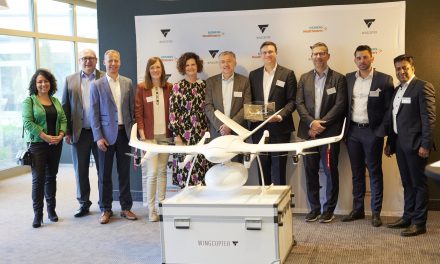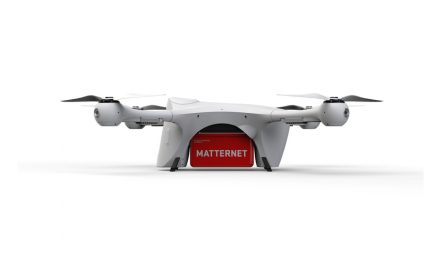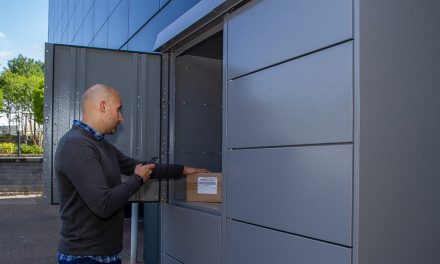
Drones and manned aircaft to share same airspace in new UK test corridor
 Drones will be able to fly in the same airspace as manned aircraft in a planned new test corridor in the UK.
Drones will be able to fly in the same airspace as manned aircraft in a planned new test corridor in the UK.
Cranfield University and Blue Bear Systems Research have announced that they intend to create a National Beyond visual line of sight Experimentation Corridor” (NBEC) which will stretch across Bedfordshire from Blue Bear’s headquarters in Oakley to Cranfield University’s Global Research Airport.
The UK Government has already signalled its goal of making the country a pioneering centre for drone development and commercialisation by offering more scope for beyond visual line of sight (BVLOS) testing – and the shared airspace concept will also be a key attraction for the NBEC.
According to Blue Bear: “The goal of the NBEC is to provide a safe, managed environment for drone/unmanned aircraft experimentation which will work towards their integration into controlled and uncontrolled airspace. Both Blue Bear and Cranfield believe the key to future drone operations is not segregation, but unification ensuring fair and equitable use of airspace for all.
“The creation of NBEC will allow new technologies to be integrated and tested together with the involvement of industry and regulatory stakeholders to provide a national capability that accelerates leading edge research.”
Ian Williams-Wynn, Managing Director of Blue Bear, commented: “The UK drone industry is going through an exciting evolution and is poised for growth. Operation under BVLOS alongside cooperative and non-cooperative air traffic in a managed environment provides a unique opportunity to maintain the UK at the forefront of drone application development, and future adoption.”
Professor Iain Gray, Director of Aerospace at Cranfield University, said: “The potential of drones and unmanned vehicles to boost UK productivity is well documented and the technology is well developed. However, there are understandable regulatory concerns that need to be overcome about how they operate alongside manned aircraft”.
Initially, part of the NBEC will be 5G enabled as part of the current Department of Culture, Media and Sport 5G programme, with future plans to enable the entire corridor.
Significantly for parcel and express delivery companies which want to explore the possibilities of drone technology, Cranfield University and Blue Bear hope that “others operating in the unmanned vehicles world will take advantage of NBEC allowing experimentation with unmanned freight/logistics for both road and air, connected autonomous vehicles (CAV), and the infrastructure that goes with it”.
The core NBEC location is rural, which Cranfield University and Blue Bear said will “allow safe experimentation areas away from major roads and urban areas”. They added the NBEC is “surrounded by core CAV testing locations and infrastructure such as Millbrook and Milton Keynes, making it the perfect location to become the future hub of UK unmanned systems experimentation”.












